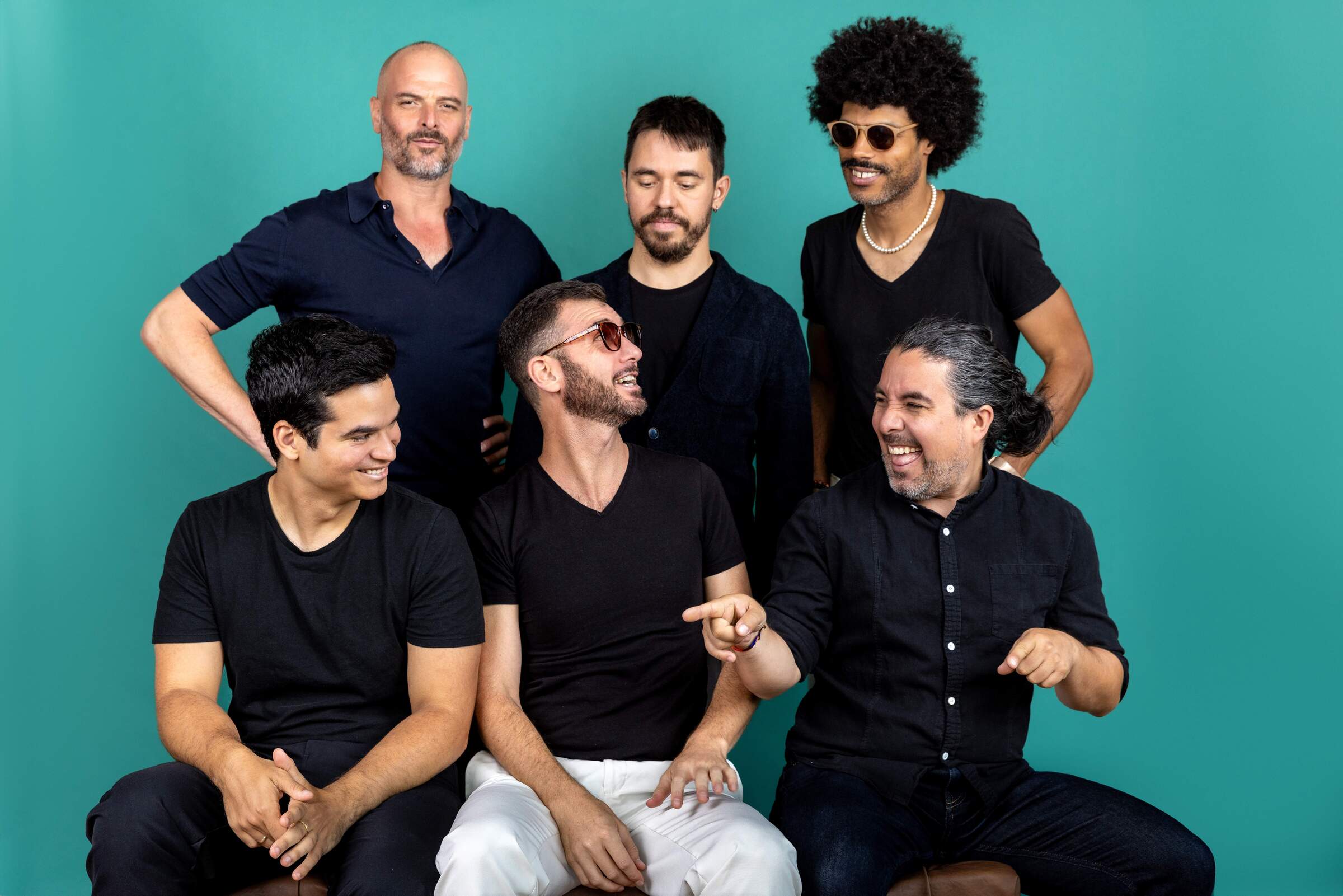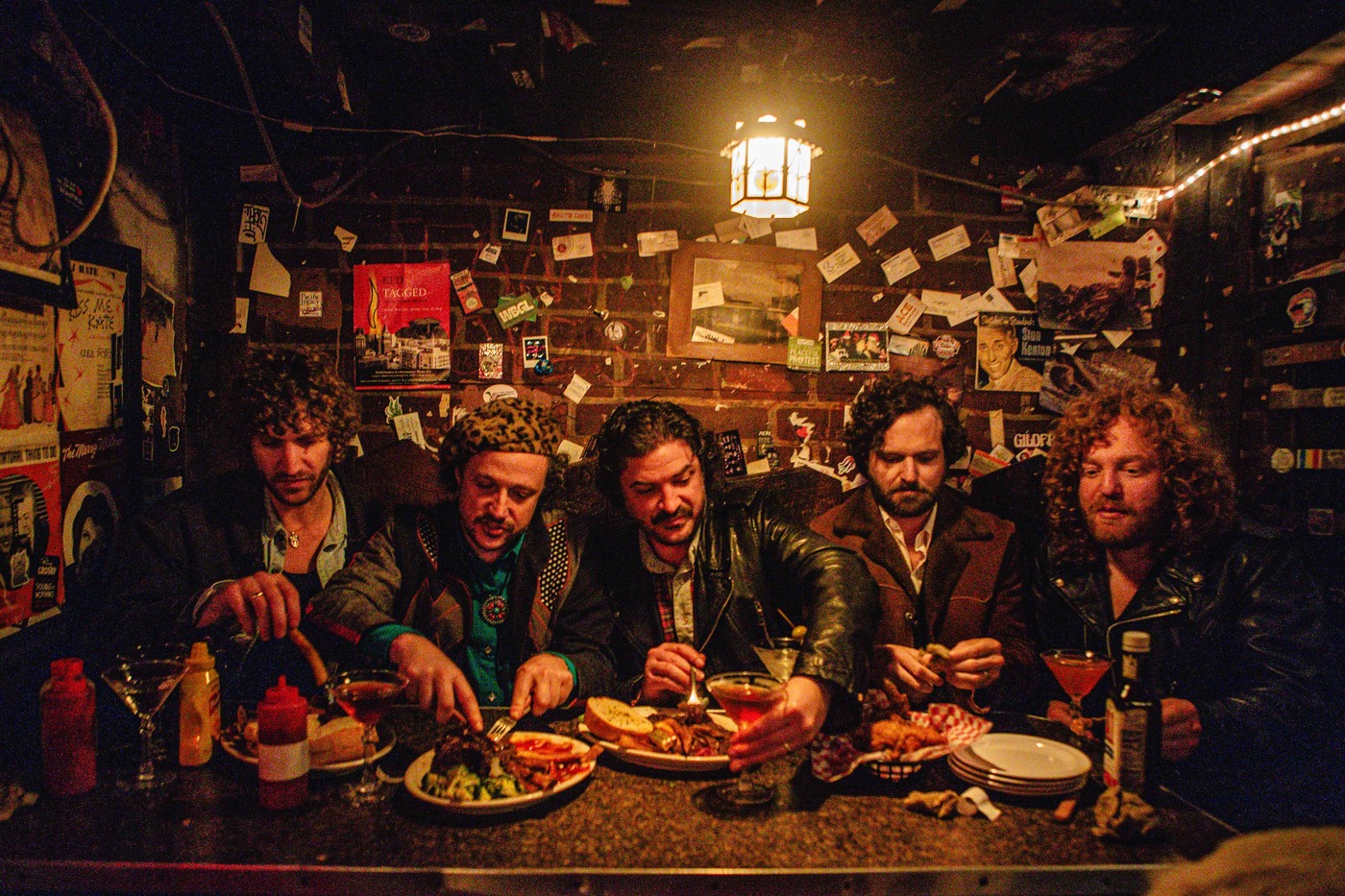Itai Kriss | Interview | New Album, ‘All Aboard Vol. 1 Departures’
Itai Kriss, a Grammy-nominated artist celebrated for his eclectic fusion of Jazz, Latin, and Middle Eastern influences, unveils his latest project with Telavana, a testament to his adventurous musical spirit.
The recent album, ‘All Aboard Vol. 1 Departures,’ released on June 5th via Avenue K Records, offers a vibrant auditory passport, transporting listeners from the bustling streets of Morocco to the rhythmic heart of Senegal. Kriss describes the album as a journey through both physical and spiritual realms, capturing the essence of travel and exploration in every note. With an ensemble featuring some of the finest musicians, including Wayne Tucker on trumpet and special guest Amos Hoffman on oud, each track is a carefully crafted voyage. Highlights include ‘Agadir,’ a nod to Morocco’s Gnawa traditions, and ‘Flânerie Brumeuse,’ which evokes a foggy Parisian stroll. From the Brazilian beats of ‘Night Vision’ to the Afro-Cuban flavor of ‘Prendido,’ the album’s diverse influences are seamlessly woven into its seven compositions. Recorded at New York City’s Bunker Studio and mixed by Aaron Nevezie, ‘All Aboard Vol. 1 Departures’ exemplifies Kriss’s mastery of blending global sounds into a cohesive musical experience.
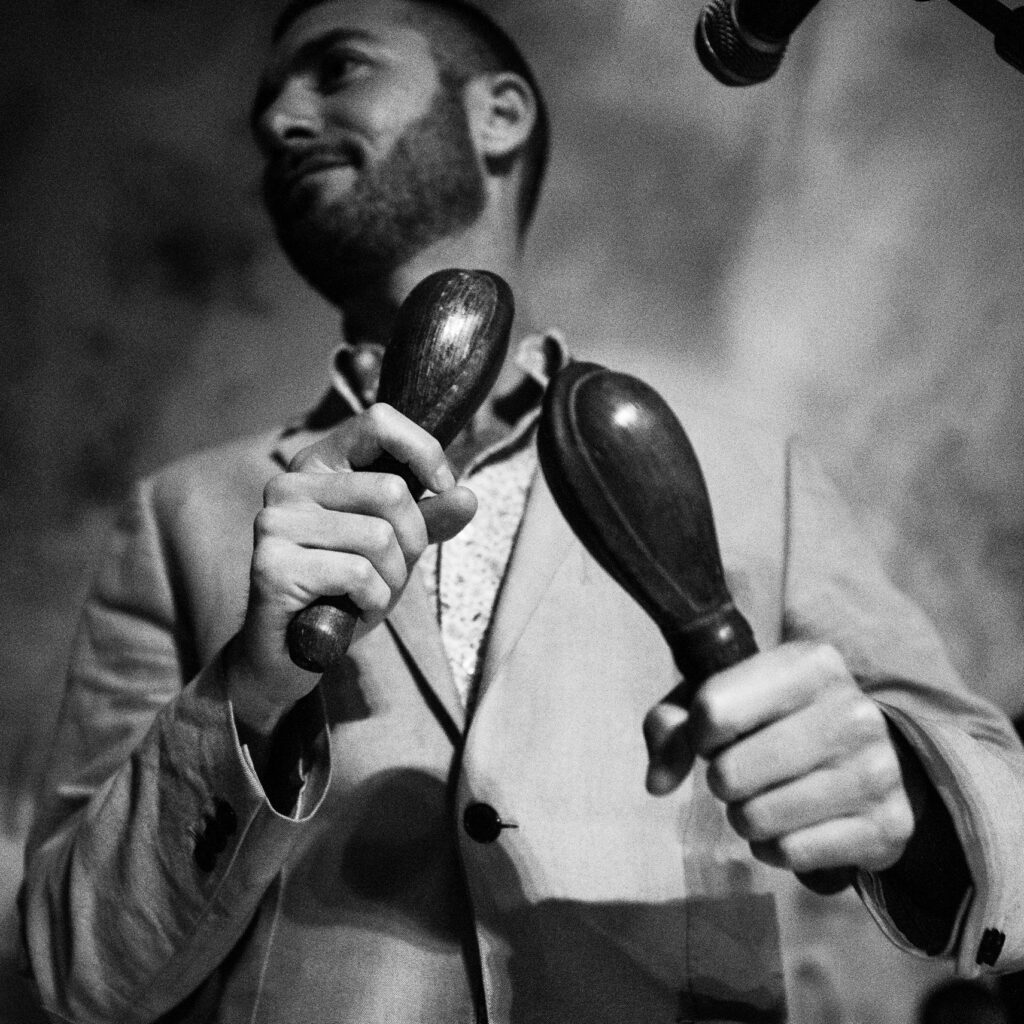
“The great thing about travel is that you can do it without leaving your seat”
Itai, your music is a vibrant tapestry woven from diverse cultural threads. How do you approach blending these different musical traditions—Jazz, Latin, and Middle Eastern—into a coherent sound?
Itai Kriss: Thank you! In fact, that part comes quite easily and naturally since these elements are all part of my musical identity. I grew up in Israel, soaking up the Mediterranean vibes, got deeply into Jazz when I was a teenager, and then immersed myself in Latin music after moving to NYC in 2002. So all these musical styles and traditions are part of me and live within me.
What drew you initially to the flute, and how have your influences evolved over time?
Initially, I think I was charmed by the sweet, refreshing sound of the flute in classical music when I heard it on the radio as a child. Later, I was introduced to the Indian Bansuri flute and the Middle Eastern Ney, both reed flutes with amazing tone and diverse repertoire. And later yet, I came to appreciate jazz flutists such as Yusef Lateef and Hubert Laws.
The concept of travel and journeys—both physical and spiritual—is central to your latest album. Can you delve deeper into how your own travels have influenced specific tracks on the album?
The great thing about travel is that you can do it without leaving your seat. You can travel in your imagination—every time you read a book, it takes you somewhere. Having said that, physically traveling to a new place, and especially to a different country, can be an extremely enriching experience that may expose us to a different way of life or point of view from that which we are accustomed to. So it’s not so much that my own travels have inspired specific tracks on the album; rather, they have served to open my mind to possibilities I might not have been able to imagine had I stayed in my hometown.
Each piece in ‘All Aboard Vol. 1 Departures’ tells a story from a different part of the world. Can you share the story behind ‘Agadir’?
I’ve always been fascinated by the rich musical tradition of Morocco, and I’ve felt especially inspired by Gnawa music. Although I haven’t yet had a chance to visit Morocco, I wanted to pay tribute with a fun, groovy tune while incorporating a little bit of Gnawa flavor into the piece.
Tracks like ‘Night Vision’ and ‘Dakar’ incorporate rhythms from Brazil and Senegal, respectively. What challenges and joys do you encounter when integrating such distinct rhythmic traditions into your compositions?
It’s a big world out there, and there are so many wonderful rhythms to explore. It feels like a shame not to play around with them and see what comes out. I’m actually planning my first trip to Brazil for the end of this year, and I hope to learn more about Brazilian rhythms and music.
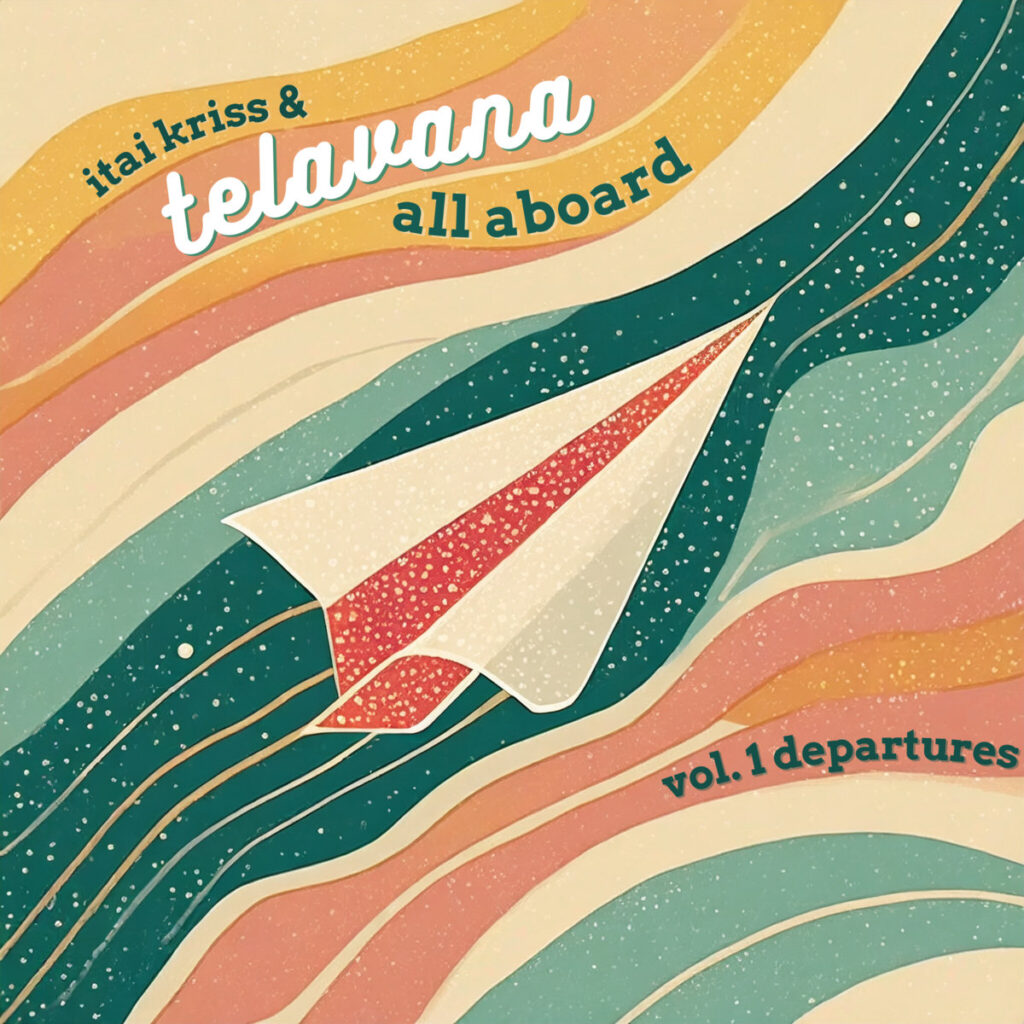
‘Beach Song’ features lyrics in Hebrew, reflecting your Middle Eastern roots. How do you decide when to incorporate vocal elements, and how do they complement your instrumental storytelling?
The human voice is a very powerful communicator. Having said that, I’m not the world’s greatest singer. So after I composed ‘Beach Song’ (during an afternoon dip in the Mediterranean), I decided that it should be sung as a chorus rather than a solo performance. On the record, it’s sung by the three Hebrew speakers in the band—drummer Dan Aran, bassist Tamir Shmerling, and myself. I do love the power of chanting (which is incorporated into ‘Agadir’ as well), and I’d like to add more vocal elements in the future.
How do you balance composition and improvisation in your work?
As an improviser who composes, I like to deliberately set the mood of each piece with composition while leaving certain sections open for individual or collective improvisation. Those sections of the tune that are open solos or “trading” short solos between two or more of the musicians are designed to provide a harmonic and rhythmic framework that allows the soloist the freedom to express themselves within the context of the mood of the tune. This allows for surprises, as the soloist can take the solo in an unforeseen direction, adding to the fun of spontaneous expression.
Your ensemble Telavana consists of incredibly talented musicians from various backgrounds. How do you foster a cohesive dynamic within the group while allowing each member’s unique voice to shine?
All the musicians in Telavana are so talented and accomplished that they actually make it easy. As seasoned musicians, they know how to play together harmoniously without stepping on any toes, while also knowing when it’s time to let it rip. In addition, I try to balance the instrumental elements when composing and arranging the tunes in such a way that gives each musician an opportunity to be in the spotlight, at least for a moment.
The album was recorded at the Bunker Studio in New York City. Can you walk us through the recording process?
The Bunker is one of NYC’s finest studios, and I feel very fortunate to have recorded multiple albums there. This album was basically recorded live, with the piano, bass, and guitar in the big live room, separated by gobos and transparent acoustic dividers; the percussion and drums each in an isolation booth; and the flute and trumpet sharing a third isolation booth. Later, percussion overdub layers were added in order to round out the sound.
Since your debut album ‘The Shark’, how has your sound evolved over the years? What new directions or experiments can we expect from you in the future?
‘The Shark’ was recorded 15 years ago, and I’d like to think I’ve learned quite a bit about music since. I’ve definitely gotten more deeply into Latin music, specifically Afro-Cuban music, in the subsequent years, as well as being more open to sounds and modes from the Middle East and Mediterranean, hence Telavana. I feel like there’s always so much more to learn, and I hope to keep refining my sound and artistry. One of the things I’ve learned as I get older is how to say more with less, find the space in the music, and really enjoy the notes NOT played. I’d like to get deeper into that economy in order to crystallize my statements to make them more effective.
What upcoming projects are you most excited about?
There’s a jazz album I recorded titled ‘Daybreak’ which should be coming out soon that I’m really excited about sharing with the world. It’s really different from Telavana and has a lot of my personal influences, like the blues, gospel, and sambas, expressed in the compositions.
Do you often play live? Who are some of your personal favorite bands that you’ve had a chance to play with over the past few years?
I play live almost every day, and I’m blessed to perform with some of the world’s best musicians and bands. There are too many to mention. I love performing with Los Hacheros, a band that gives old-school NY salsa a twist. We perform for dancers, and the interaction between the band and the audience is always super fun and energetic. Also, Edmar Castañeda is an amazing Colombian-born harpist, and I’ve very much enjoyed being part of his “world ensemble.” Cuarteto Guataca is another really fun band that plays Cuban són and salsa around New York. I also play a lot with an incredible Colombian singer by the name of María Raquel—check out her debut release on Chulo Records entitled ‘Mucha Mujer.’ Brazilian bassist Eduardo Belo is another band leader and composer I’ve had the pleasure of collaborating with; his new album is dropping this Friday on La Reserve Records. I could go on all day…
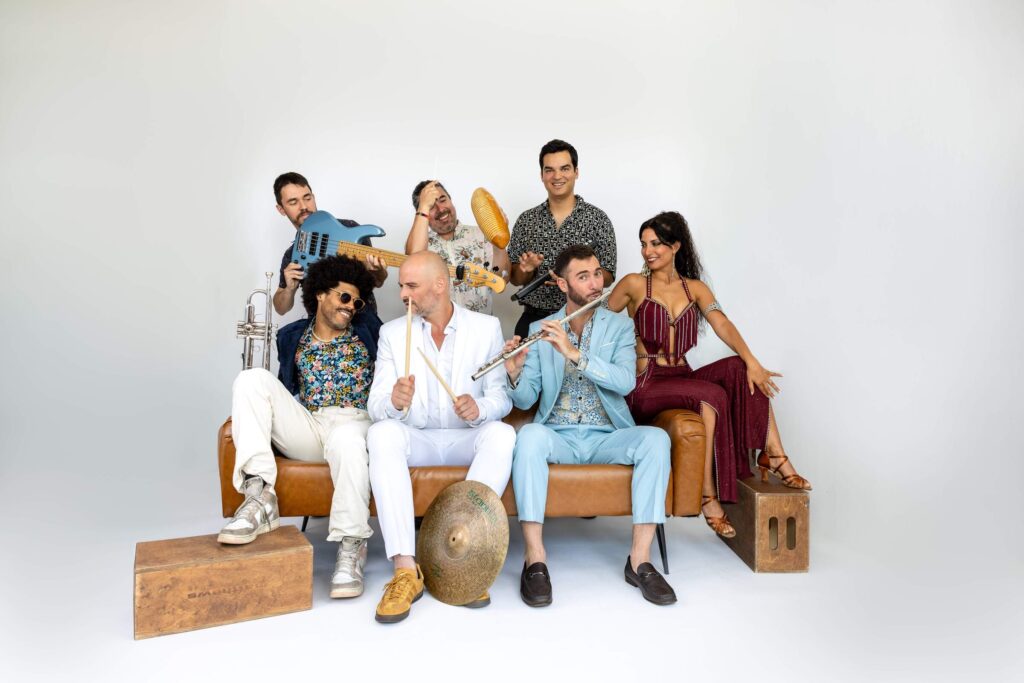
Let’s end this interview with some of your favorite albums. Have you found something new lately you would like to recommend to our readers?
These are not necessarily new, but they are some of my all-time favorite albums:
John Coltrane – ‘Ole Coltrane, A Love Supreme’
Alain Perez – ‘ADN’
Ray Barretto – ‘Ricanstruction, Indestructible’
Sonora Ponceña – ‘Fuego en el 23’
D’Angelo – ‘Voodoo’
Wilson Moreira & Nei Lopez – ‘A Arte Negra de Wilson Moreira e Nei Lopez’
Miles Davis – ‘Porgy and Bess’
Oum Khalthoum – ‘Inta Omri’
Havana D’Primera – ‘Pasaporte’
Klemen Breznikar
Headline photo: Krystal Conye
Itai Kriss Official Website / Facebook / Instagram / Twitter / Bandcamp / YouTube

